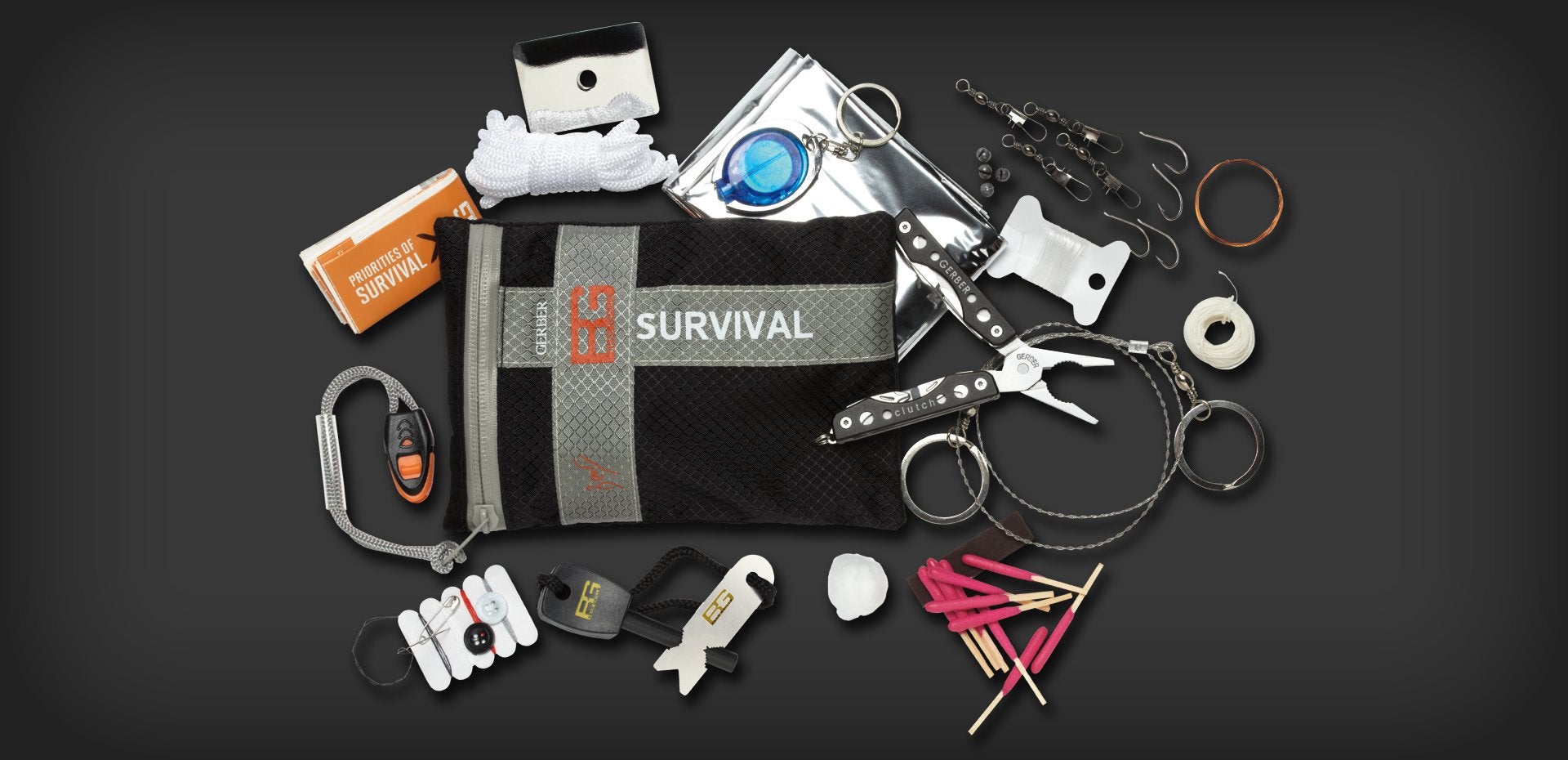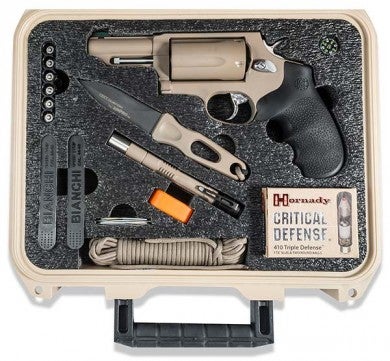The Pros and Cons of Ready-Made Survival Kits
Ashley 04.28.14

Ready-made survival kits, in theory, seem like a smart idea. Usually created by established companies to appeal to the layperson or an amateur survivalist, survival kits are intended to be a one-stop-shop for everything you need in the event of a disaster or emergency. Common pre-made kits include first aid kits (FAKs) or bug-out bags (some are food-focused, whereas others are made specifically for vehicles). But there are some downsides to purchasing a kit that promises to cover all the bases for you.
 Recently, Taurus International came out with the First 24 kit, which provides the tools a person would need to survive the first 24 hours of a disaster. The kit is equipped with a Taurus (2-617029) Customized by Aim Pro Tactical, a CRKT Sting Survival Knife, an HKS Speed Loader, a Brite Strike EPLI Flashlight and several other essential items (check out the product page for the full list of items). The kit’s MSRP is $1,399. On paper, much of this seems like a cool idea. However, critics of the kit noted that a better, custom kit could be constructed for less money but more value. While there are some cool features to the Taurus kit, it’s just one of many survival kits that promises to be a life-saving resource. But are survival kits worth it?
Recently, Taurus International came out with the First 24 kit, which provides the tools a person would need to survive the first 24 hours of a disaster. The kit is equipped with a Taurus (2-617029) Customized by Aim Pro Tactical, a CRKT Sting Survival Knife, an HKS Speed Loader, a Brite Strike EPLI Flashlight and several other essential items (check out the product page for the full list of items). The kit’s MSRP is $1,399. On paper, much of this seems like a cool idea. However, critics of the kit noted that a better, custom kit could be constructed for less money but more value. While there are some cool features to the Taurus kit, it’s just one of many survival kits that promises to be a life-saving resource. But are survival kits worth it?
The Pros
Public awareness. There’s some novelty to survival kits, perpetuated by the popularity of post-apocalyptic stories. Even when kits are marketed as “zombie survival” tools, a pre-made kit can be a great way to introduce someone to the importance of carrying certain items on a daily basis. The cool factor of the gear can be used as a transition into actual survival literacy.
Essentials. Kits are made to offer a well-rounded assortment of products, so you’re likely getting the most basic essentials. This can provide a good basis to build upon with additional items.
Cost. Survival kits, typically, are fairly inexpensive, especially the camping or first aid kits you can buy at outdoor retail shops. You’ll get a lot of products for a pretty good deal, and they often come enclosed in a nice box or container that can be re-used or stored easily.
The Cons
Quality. The quality of products in survival kits varies drastically from company to company, and it also depends on what kind of survival kit it is. The Taurus kit, for example, includes a handgun and a knife, two tools that can get expensive. First aid kits, unless made for the military or emergency industry, are often packed full with BandAids and other low-end supplies, which is fine for treating a scrape on a hike, but not so much for addressing real injuries during an emergency. Also, many inexpensive kits that include pocket knives or multitools often use cheaply-made, off-brand items that will ultimately falter under duress.
Lack of customization. Because you’re buying a pre-made kit, it takes away the experience of curating your own. If you’re already used to EDCing particular items, you’re likely used to selecting items yourself and compiling a specific assortment of gear. A kit is a one-size-fits-all approach to an experience that should be unique to individuals.
Value. Sure, I’ve already mentioned above that cost is a pro of survival kits–sometimes. But cost and value differ. A cheap kit with the bells and whistles might be enough for a one-time emergency, but will it hold up over time? Also, kits can enable companies to charge more than a kit is worth because it may seem like you’re getting a great deal. There was some criticism about the cost of the First 24 kit; although it will likely be closer to $1,100 in stores, it’s still a costly investment. Even for novice preppers, that money can go a long way in establishing a high-quality, highly customized kit. Those who EDC for survivalism known firsthand that crafting a custom kit provides more long-term value than a generic ensemble of pre-picked items.
The Bottom Line
Survival kits can be good for beginners, but even then it’s best to learn by researching products for yourself. That experience provides insight into your own preferences and needs, and kits tend to take that process away from consumers. It’s also important to evaluate what items you need. Perhaps you want a ready-to-go first aid kit for your car’s glove compartment, but a more extensive and personalized bug-out bag to keep in the trunk. At the end of the day, it’s best to think of survival kits as supplemental, but your best course of action should be to research and invest in the best products that you can rely on when you need to most.